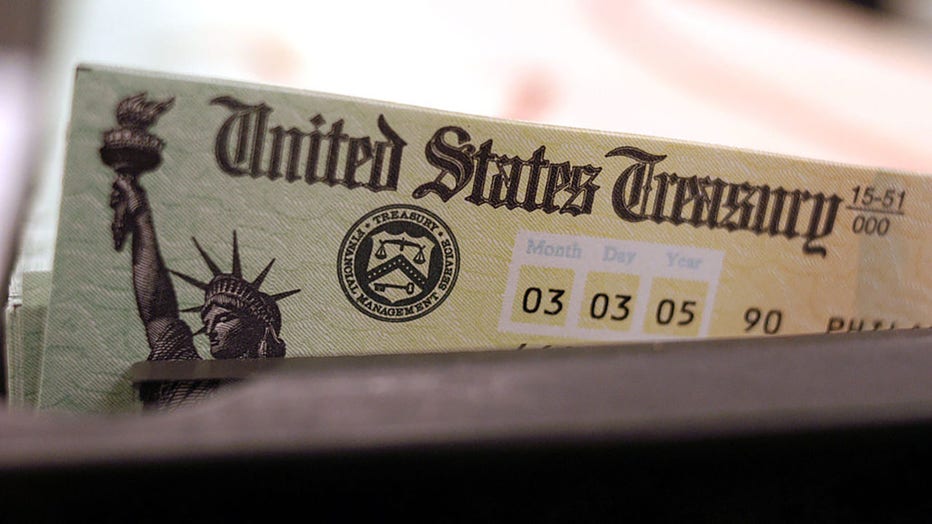Social Security: 3 changes to look out for in 2025, according to experts
WASHINGTON - Several changes are expected to take place for Social Security beneficiaries in 2025, according to experts.
The Social Security Administration has not yet announced any final adjustments to the program, but beneficiaries, as well as current workers, are advised to plan ahead and understand how any potential changes could impact them.
Here’s what to know:
Social Security COLA increase 2025

FILE - Blank Social Security checks are run through a printer at the U.S. Treasury printing facility Feb. 11, 2005, in Philadelphia, Pennsylvania. (Photo by William Thomas Cain/Getty Images)
While the federal government isn’t expected to release official numbers until October, the Social Security cost of living adjustment (COLA) is likely to be smaller in 2025 than in 2024, according to some estimates.
Year-over-year inflation reached its lowest level in more than three years in July. Measured from a year earlier, prices rose 2.9% in July, down from 3% in June, according to the Labor Department.
An annual COLA is based on the average inflation rate during the third quarter of the year, July through September. Kiplinger, which publishes personal finance advice and business forecasts, noted how the easing inflation rate means retirees will likely get a smaller increase in their Social Security checks in 2025 compared to previous years when inflation was higher.
In 2024, Social Security beneficiaries received a 3.2% COLA increase – raising the average social security check for more than 71 million Americans by about $59 per month.
Estimates from the advocacy group The Senior Citizens League put the COLA for 2025 at 2.6%, which is based on the July numbers from the Consumer Price Index for Urban Wage Earners and Clerical Workers (CPI-W). That’s the first of three sets of numbers the Social Security Administration will use to calculate the 2025 COLA.
SSA full retirement age (FRA) in 2025
Americans born in 1957 or earlier are already eligible for their full Social Security benefits. The full retirement age (FRA) is 66 for those born between 1943 and 1954, according to the SSA.
The full retirement age is increasing gradually for those born from 1955 to 1960, until it gets up to 67.
In 2025, the full retirement age will be 66 years and 10 months.
The age Americans can receive their full Social Security benefits:
- Those born between 1943-1954, full retirement age is 66
- Those born in 1955, full retirement age is 66 and 2 months
- Those born in 1956, full retirement age is 66 and 4 months
- Those born in 1957, full retirement age is 66 and 6 months
- Those born in 1958, full retirement age is 66 and 8 months
- Those born in 1959, full retirement age is 66 and 10 months
- Those born in and later, full retirement age is 67
- NOTE: People born on January 1 of any year, refer to the previous year.
Social Security credits and taxes in 2025
Social security credits
Americans must earn at least 40 Social Security credits to be eligible for benefits. These can be earned by working and paying Social Security taxes.
Since 1978, workers can earn up to a maximum of four credits per year. The credits are based on total wages and self-employment income for the year.
In 2024, workers can earn one Social Security and Medicare credit for every $1,730 in covered earnings each year. They must earn $6,920 to get the maximum four credits for the year, according to the SSA.
The amount of earnings it takes to earn a credit can increase each year. However, the exact amount for 2025 hasn’t been announced yet.
Wage cap
Meanwhile, Social Security caps the amount of income American workers pay taxes on and get credit for when benefits are calculated. For earnings in 2024, cap is $168,600 and is indexed to inflation.
This means that a worker earning $168,600 in 2024 and another worker earning $600,000 pay the same amount of Social Security tax.
In 2022, the wage cap was $147,000. It increased by $13,200 in 2023, when it went to $160,200. It rose by $8,400 to $168,600 in 2024, the SSA’s website shows.
Kiplinger says it’s likely to rise again in 2025, but that hasn’t been announced yet either. Regardless, experts note that higher earners should expect to lose more of their income to Social Security taxes in 2025.

